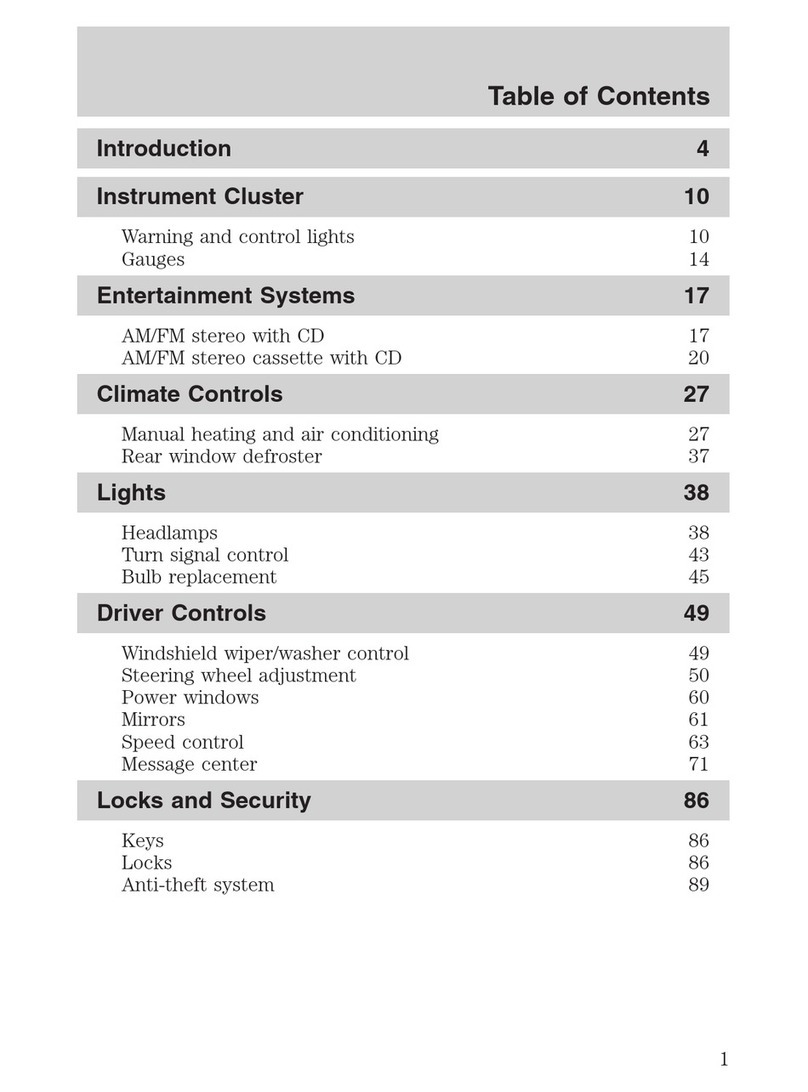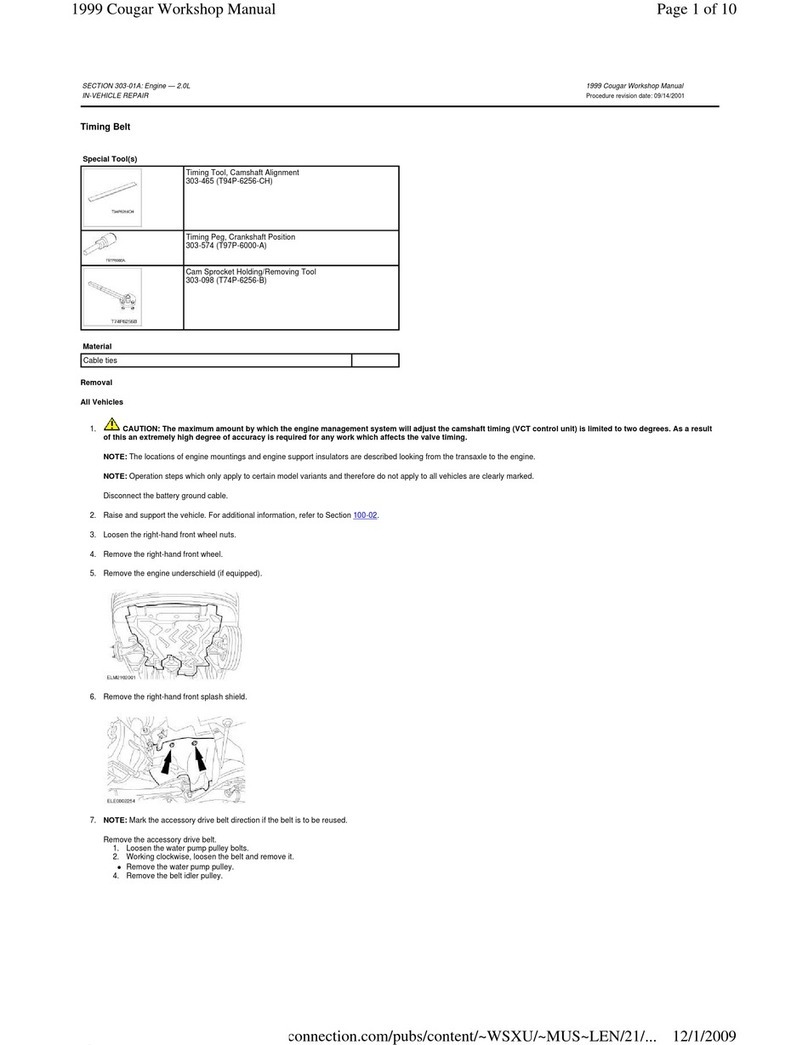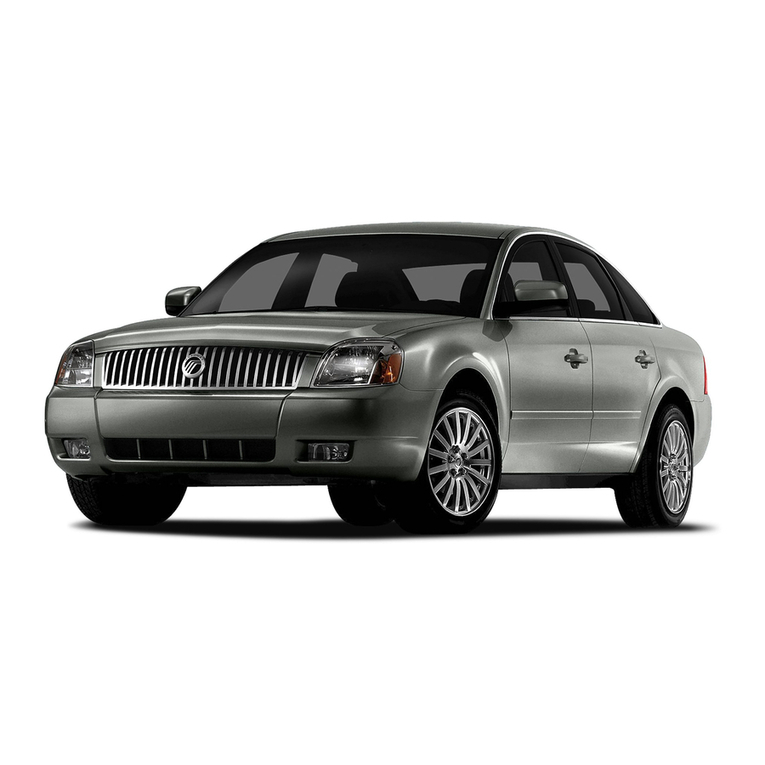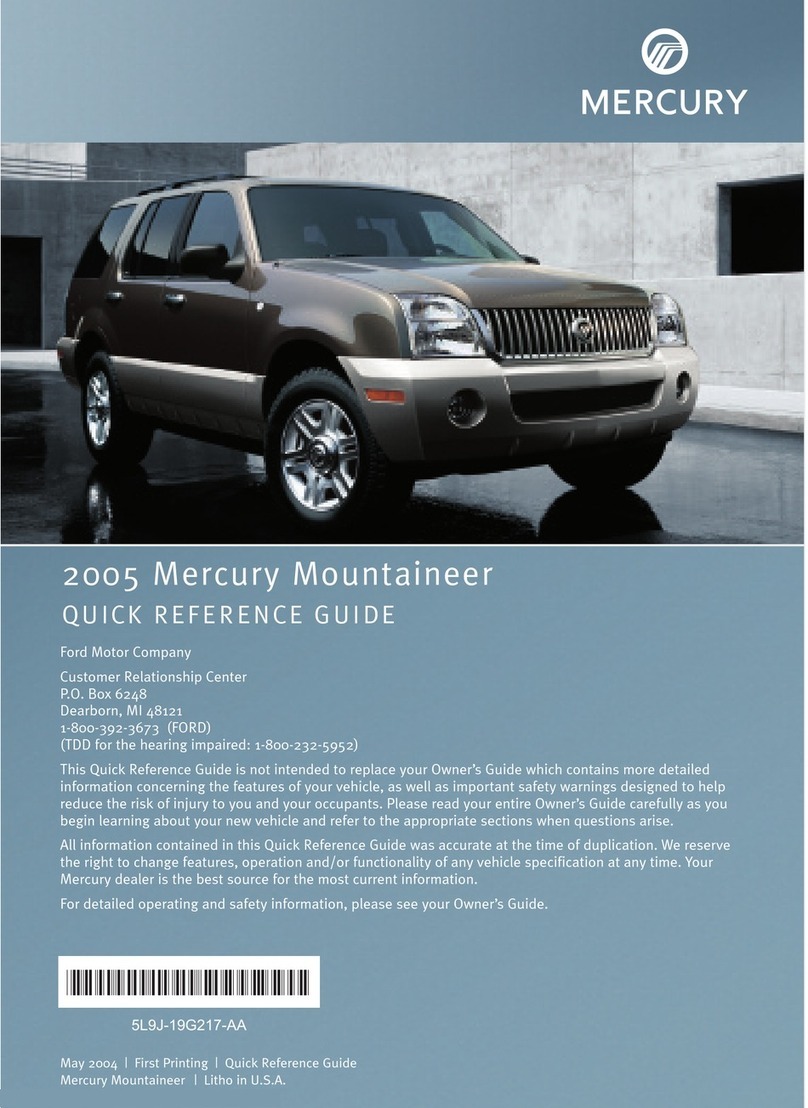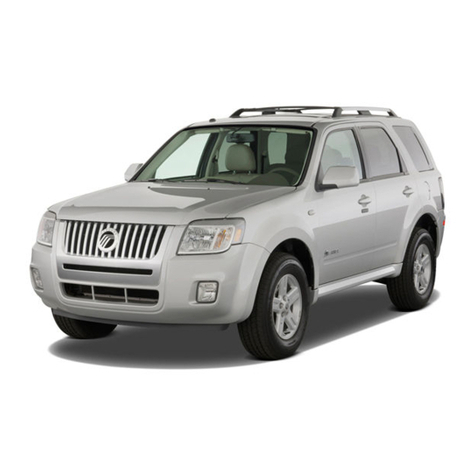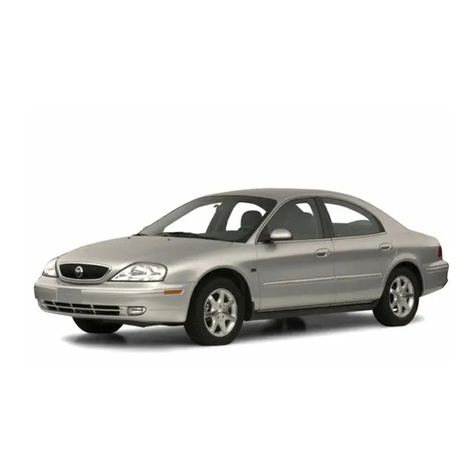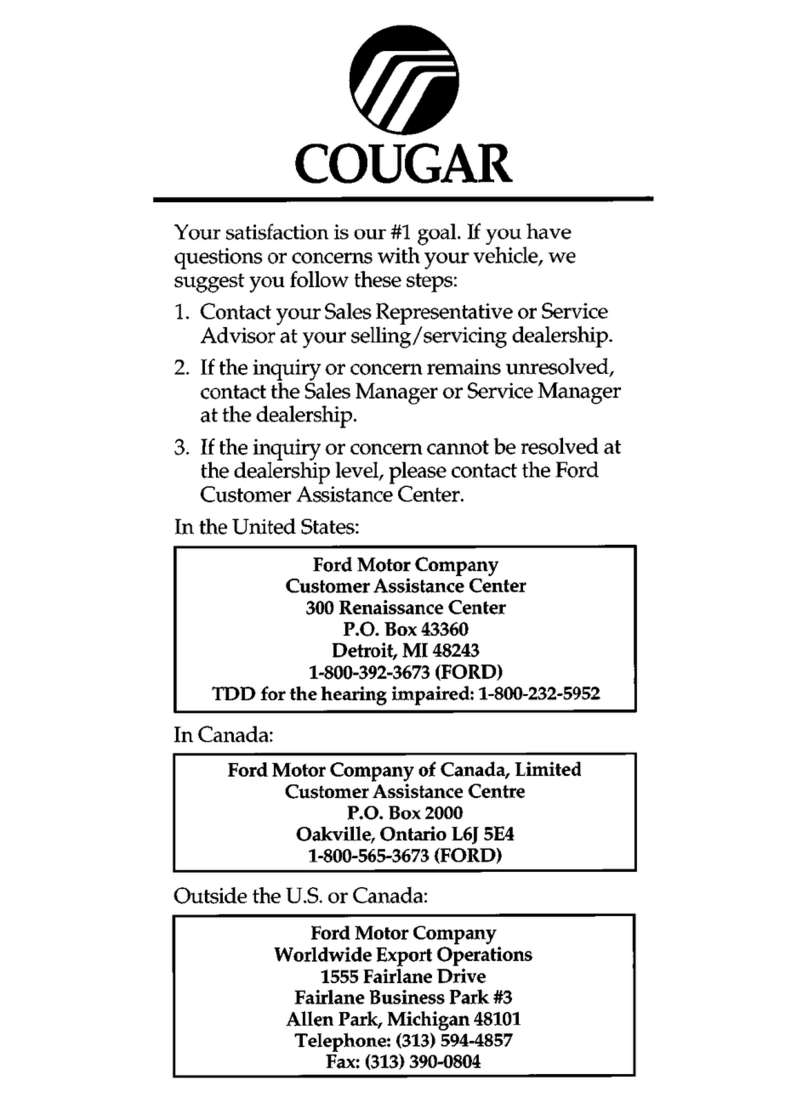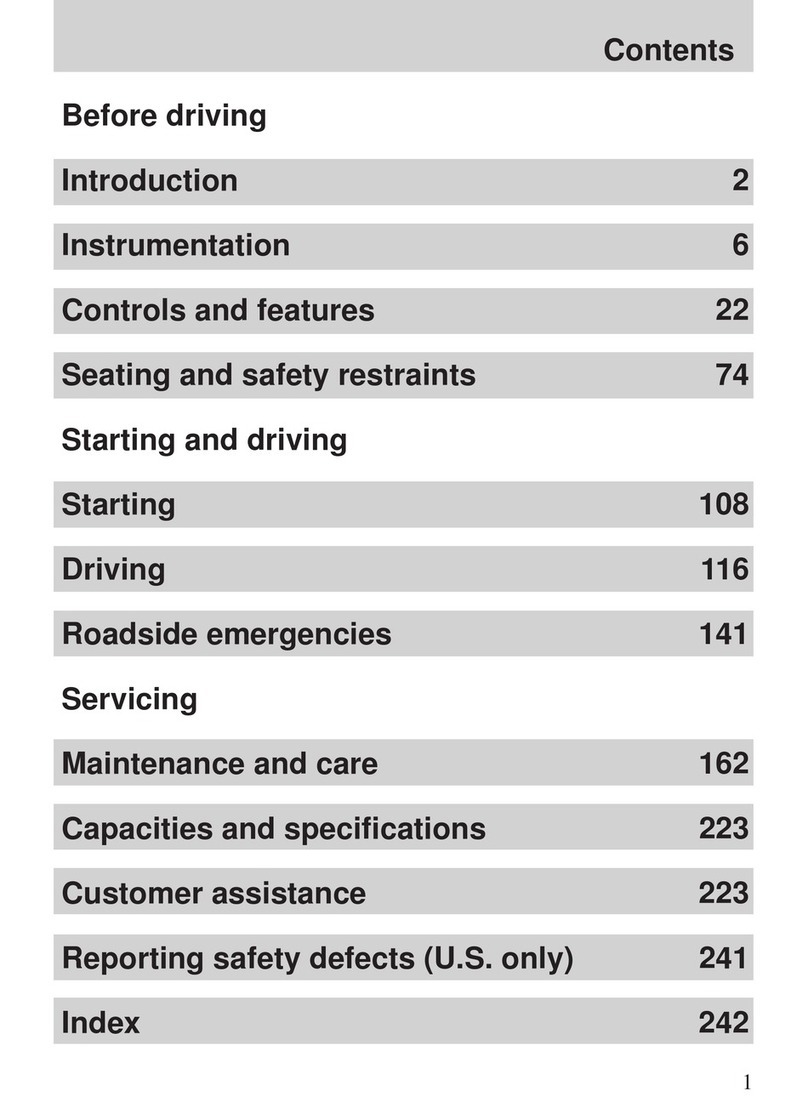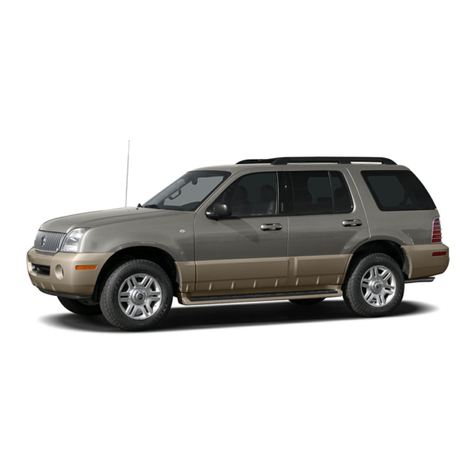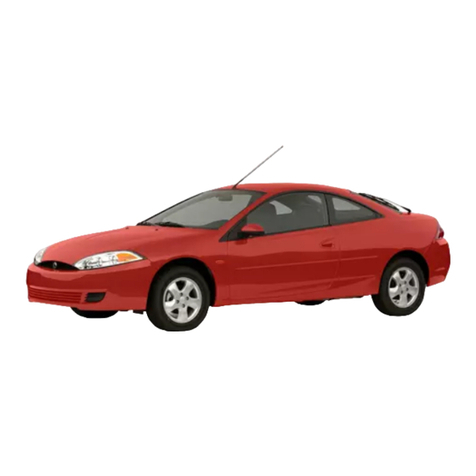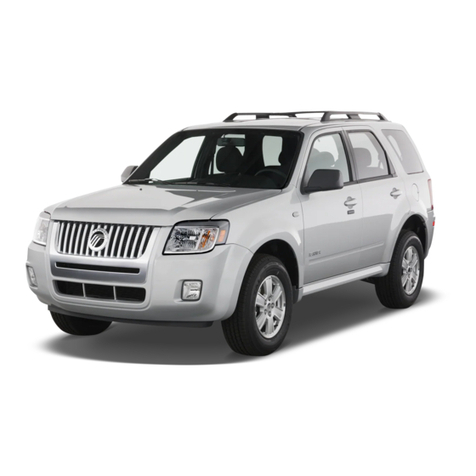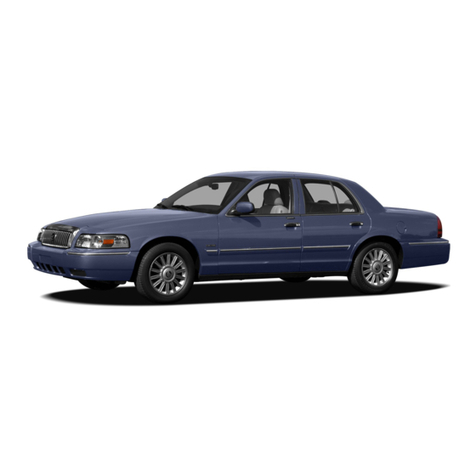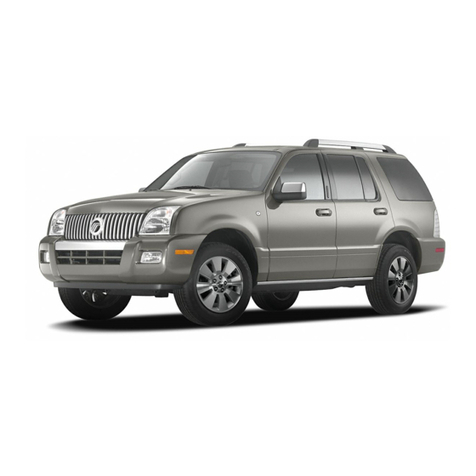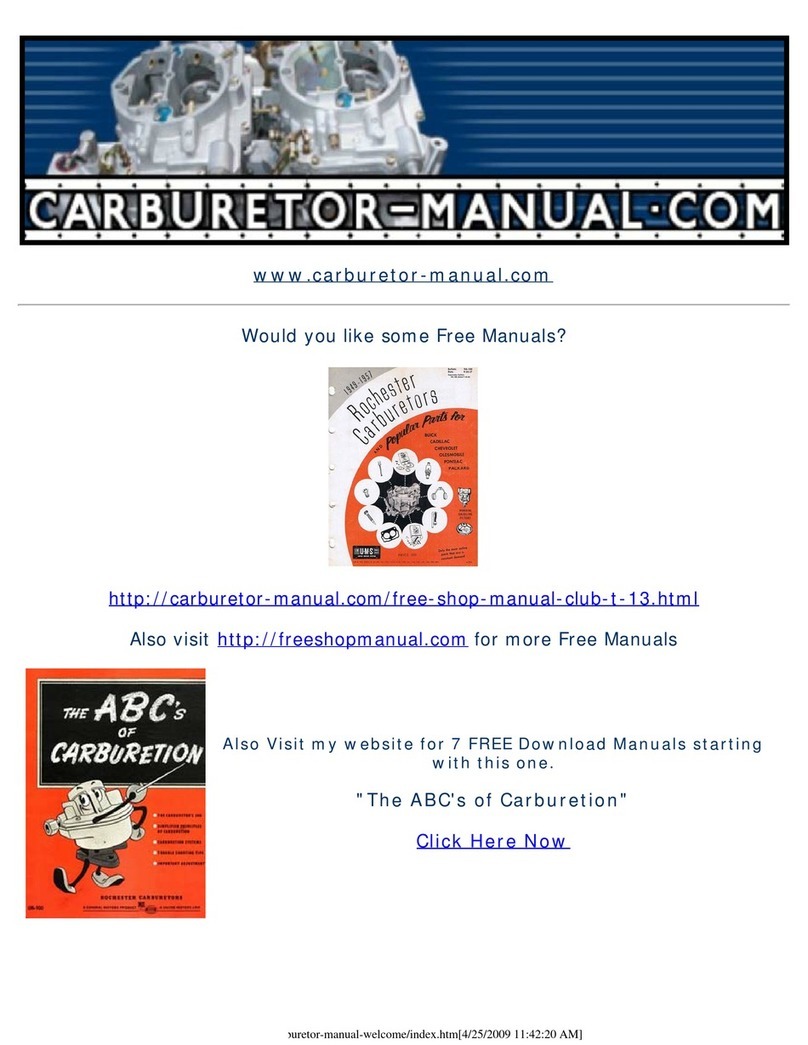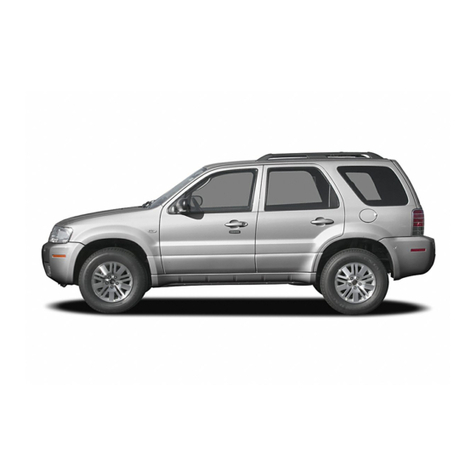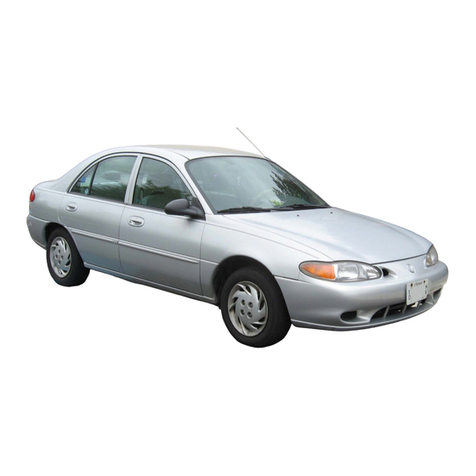2007 Mercury
|
Montego
Quick Reference Guide
Ford Motor Company
Customer Relationship Center
P.O. Box 6248
Dearborn, MI 48121
1-800-392-3673 (FORD)
(TDD for the hearing impaired: 1-800-232-5952)
This Quick Reference Guide is not intended to replace your Owner’s Guide which contains more
detailed information concerning the features of your vehicle, as well as important safety warnings
designed to help reduce the risk of injury to you and your occupants. Please read your entire Owner’s
Guide carefully as you begin learning about your new vehicle and refer to the appropriate sections
when questions arise.
All information contained in this Quick Reference Guide was accurate at the time of duplication.
We reserve the right to change features, operation and/or functionality of any vehicle specification at
any time. Your Mercury dealer is the best source for the most current information.
For detailed operating and safety information, please consult your Owner’s Guide.
February 2006 | First Printing | Quick Reference Guide
Mercury Montego | Litho in U.S.A.
*7T5J19G217AA*
7T5J-19G217-AA
2007 Mercury Montego
|
Quick Reference Guide
Essential Information
Location of Spare Tire and Tools Your vehicle is equipped with a temporary spare tire which
is smaller than a regular tire and designed for emergency use only. The jack, spare tire, jack handle and
lug nut wrench are under the cargo cover in the trunk of the vehicle.
Fuses If your electrical components aren’t working properly, a fuse may have blown. For more
information, please consult your Owner’s Guide.
Fuel Pump Shut-off Switch This device stops the electric fuel pump from sending fuel to the
engine when your vehicle has had a substantial jolt. After an accident, if the engine cranks but does
not start, this switch may have been activated. The fuel pump shut-off switch is located in the front
passenger footwell area in the right upper corner.
Unleaded Fuel Recommendations For optimum performance use “Regular” unleaded fuel
with a pump (R+M)/2 octane rating of at least 87. We do not recommend the use of gasolines labeled
as “Regular” with octane ratings of 86 or lower that are sold in high altitude areas.
Tire Pressure Safe operation of your Montego requires that your tires be properly inflated. The
Mercury recommended inflation pressure is found on the Tire Label or the Certification Label located
near the front door latch on the driver’s side. At least once a month and before long trips, inspect each
tire and check the air pressure with a digital or dial-type tire gauge. Don’t forget the spare. Air pressure
should be checked when the tires are cold. Inflate all tires to the inflation pressure recommended by
Ford Motor Company.
Rear Window Buffeting When one or both of your rear windows are fully open, you may
experience a wind throb or buffeting noise. This is common among all vehicles and can be eliminated
simply by lowering a front window two to three inches.
Roadside Assistance In addition to your New Vehicle Limited Warranty, Mercury provides new
vehicle owners with a complimentary roadside assistance program. This service is available 24 hours
a day, seven days a week, for three years or 36,000 miles (60,000 km). It covers changing a flat tire,
jump starts, limited fuel delivery, lock-out assistance, winch out, and towing of your vehicle.
United States (800) 241–3673
Canada (800) 665–2006
Additional Features
Memory Feature
(if equipped) This feature will allow you to set two positions for
the driver's seat, power mirrors, and adjustable pedals (if equipped). Set the position
by pressing the SET button (indicator will illuminate), then press the 1 or 2 button to
set the position to either Driver 1 or Driver 2. This memory setting can then be
recalled when you press the 1 or 2 button, enter Customer Code 1 or 2 on the keypad,
or when you press unlock on the remote entry system (one of your remote
transmitters is associated with Driver 1 and the other transmitter is associated with Driver 2)
.
HomeLink (if equipped) The HomeLink Wireless Control System on the driver’s visor provides a
convenient way to replace up to three handheld transmitters with a single device. This feature will
operate most garage doors, entry gate operators, security systems, and home or office lighting. For
programming, please consult your Owner’s Guide.
Power Mirrors To adjust your mirrors, rotate the control clockwise to adjust the
right mirror and counterclockwise to adjust the left mirror. Move the control in the
direction you wish to tilt the mirror. Then rotate the control to the center position to
lock the mirrors in place.
eyless Entry Pad The keyless entry keypad can be used to lock or unlock the
doors without using a key. It can also control the memory seat, power mirrors, and
adjustable pedals features (if equipped). For more information, please consult your
Owner’s Guide.
Autolock Your vehicle is equipped with an autolock feature. The autolock feature will automatically
lock all doors when your vehicle is in motion and meets a set of conditions, as described in your
Owner’s Guide. Your vehicle comes with this feature enabled. You can enable or disable this feature
by following the activation or deactivation procedure outlined in your Owner’s Guide.
Adjustable Pedals (if equipped): The accelerator and brake pedal should only be adjusted when
the vehicle is stopped and the gearshift is in the P (Park) position. Press the top of the control to adjust
the pedals away from you or press the bottom of the control to adjust the pedals toward you.
Reverse Sensing System (if equipped) The Reverse Sensing System (RSS) sounds a tone to warn
the driver of obstacles near the rear bumper when R (Reverse) is selected and the vehicle is moving at
speeds less than 3 mph (5 km/h). The system is not effective at speeds above 3 mph (5 km/h) and
may not detect certain angular or moving objects. The RSS detects obstacles up to 6 feet (2meters)
from the rear bumper with a decrease coverage area at the outer corners of the bumper. When the
obstacle is less than 10 inches away, the tone will sound continuously.
Family Entertainment System (FES) (if equipped) Your vehicle may be equipped with a Family
Entertainment System (FES). Refer to the Family Entertainment System Supplement Guide for further
information on the operation of your system.
one
|
Tune/DiscSelector Press to go up or down
the radio frequency or to select a desired disc.
Also use in menu mode to select various settings.
two
|
Load Press to begin the CD load
sequence. Press and hold to autoload up to
6 CDs.
three
|
CD Press to enter CD mode. If a CD is
already loaded into the system, the CD will
begin playing where it last ended.
four
|
On/Off/Volume Control Push to turn
the system ON or OFF. Turn to increase or
decrease volume. If the volume is set above a
certain level and the ignition is turned off, the
volume will come back on at a “nominal” level
when the ignition switch is turned back on.
five
|
AM / FM Press to select AM or FM
frequency bands.
six
|
Seek Function Press to access the
next/previous strong station or track.
seven
|
Scan Function Press for a brief
sampling of radio stations or CD tracks. Press
again to stop.
eight
|
CD Rewind Press to manually reverse in
a CD track.
nine
|
CD Fast Forward Press to manually
advance in a CD track.
ten
|
Setting Memory Preset To set a station:
Press AM/FM to select frequency band, tune to
a station, then press and hold a preset button
until the sound returns.
Bass / Treble Press MENU until bass or treble
settings are displayed; adjust using the
SEE control.
Balance / Fade Press MENU until Balance is
displayed; press to adjust the audio between
the left and right speakers using the SEE
control. Press MENU again to display Fade.
Press SEE to adjust audio between the front
and rear speakers.
Setting the Clock Press MENU until SELECT
HOUR or SELECT MINS is displayed. Press the
up/down arrows or SEE control to adjust the
hours/minutes. Press MENU again to
disengage clock mode.
MP3 Track/Folder Mode In Track mode, pressing
SEE will scroll through all tracks on the disc.
In Folder mode, pressing SEE will scroll only
through tracks within a selected folder.
Driver and Passenger Side Temperature
Set desired cabin temperature with the
1or 4red and blue buttons. Press 1for driver’s
side, 4for passenger’s side. Recommended
setting is 72°F (22°C) to 75°F (24°C).
Dual Control (if equipped)
Press 10 DUAL to engage/disengage separate
passenger side temperature control.
Automatic Operation
Set desired 1cabin temperature. Press 2AUTO
button for full automatic operation. The system
will automatically adjust airflow temperature,
fan speed, airflow direction, A/C, and
recirculated air based on the selected
temperature to heat or cool the vehicle to the
desired temperature as soon as possible.
Max A/C Operation
Automatic operation: Press 2AUTO button for
full automatic operation. Do not override A/C or
recirculated air. Set the desired temperature.
Override Operation: Select 7air distribution.
Select 8A/C and 9recirculated air. Use
recirculated air with A/C to provide colder
airflow. Set temperature setting to 60°F
(15.5°C). Initially set to highest fan speed 5,
then adjust to maintain comfort.
Manual Override Operation: Press 1to set
desired cabin temperature. Adjust any of the
following for personal comfort preferences: 5
fan speed, 7airflow direction, 8A/C, and
9recirculated air. Fan speed, A/C, and
recirculated air overrides will not turn off the
AUTO indicator light. Airflow direction overrides
will turn off the AUTO indicator light.
Airflow Direction Control (if equipped)
Press 7repeatedly to select airflow direction.
Defogging / Demisting
Press 3to distribute outside air through the
windshield defroster vents and demister vents.
To reduce humidity buildup in the vehicle,
do not drive with the Climate Control turned off.
Also, do not drive with recirculated air selected
unless A/C is operating.
Heated Seats (if equipped)
Press 6to cycle through available settings of
high heat (2 lights), low heat (1 light), and off
(no lights).
4
3
5
6
6
8
10
2
1
7
9
1
2
4
5
7
9
10
3
6
8
6
Premium/Audiophile In-Dash 6-CD/MP3 Sound System (if equipped) Climate Control
